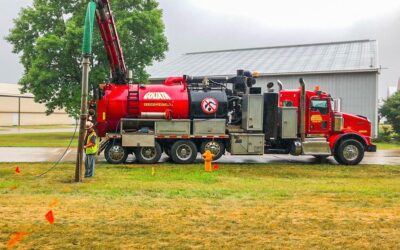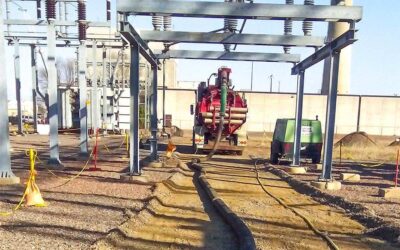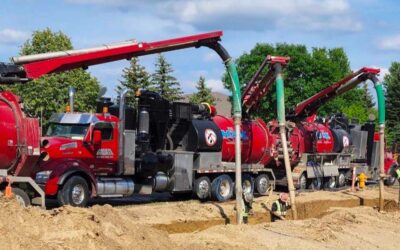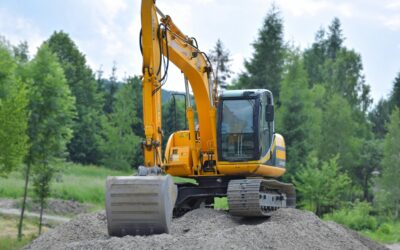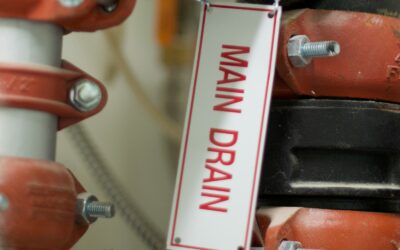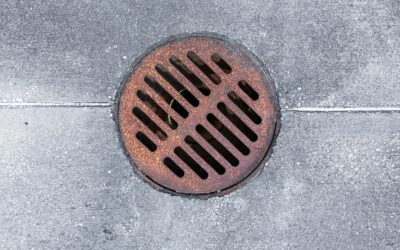What is Hydro Excavation
What is Hydro Excavation?
Are you tired of dealing with the risks and inconveniences of traditional excavation methods? Hydro excavation, also known as hydrovac, is a non-destructive method of digging that utilizes the combination of high-pressure water and a powerful vacuum system.
Hydrovac services are commonly used to excavate soil, rocks, or other materials around underground utilities, pipelines, and sensitive areas. This technique has become a game-changing solution for industries (such as construction and utility maintenance) where efficiency, precision, and safety are paramount.
In this article, we will explore the ins and outs of hydrovac services, how they work, and the benefits they provide. So, let’s dive in and discover why hydro excavation is transforming the way we approach digging projects.
How Does Hydro Excavation Work?
Hydro excavation is a relatively simple process, involving only two primary tools: a water jet and vacuum. By combining the force of water and the suction of a vacuum, hydrovac services have revolutionized the way excavation is done, offering a safe and efficient solution for various industries. Here is a step-by-step overview of how hydrovac excavation works:
Site Preparation: The team will identify and remove any obstacles or debris that could impede the excavation process. This includes clearing away rocks, vegetation, and other obstructions to ensure a safe and efficient excavation.
Water Jetting: A high-pressure water jet is directed into the ground through a handheld wand or specialized excavation nozzle. The water is delivered at a controlled rate and pressure to safely break up the soil.
Soil Extraction: As the pressurized water penetrates the ground, it loosens the soil, creating a slurry. The slurry is then extracted using a strong vacuum system, which simultaneously removes the excavated material and water from the excavation site.
Separation and Filtration: Once the soil and water mixture is extracted, it is passed through a separation unit or filtration system. These devices separate the soil from the water, allowing the water to be recirculated back into the system for reuse.
Disposal: The excavated soil is typically deposited into a debris tank or transported to a designated location for disposal. This ensures proper waste management and prevents environmental contamination.
Visual Inspection: As the excavation progresses, the operator can visually inspect the exposed utilities or underground structures to ensure their integrity and identify any potential issues.
Backfilling: Once the required work is completed, the excavated area can be backfilled with the appropriate material (such as clean soil or gravel) restoring the site to its original condition.
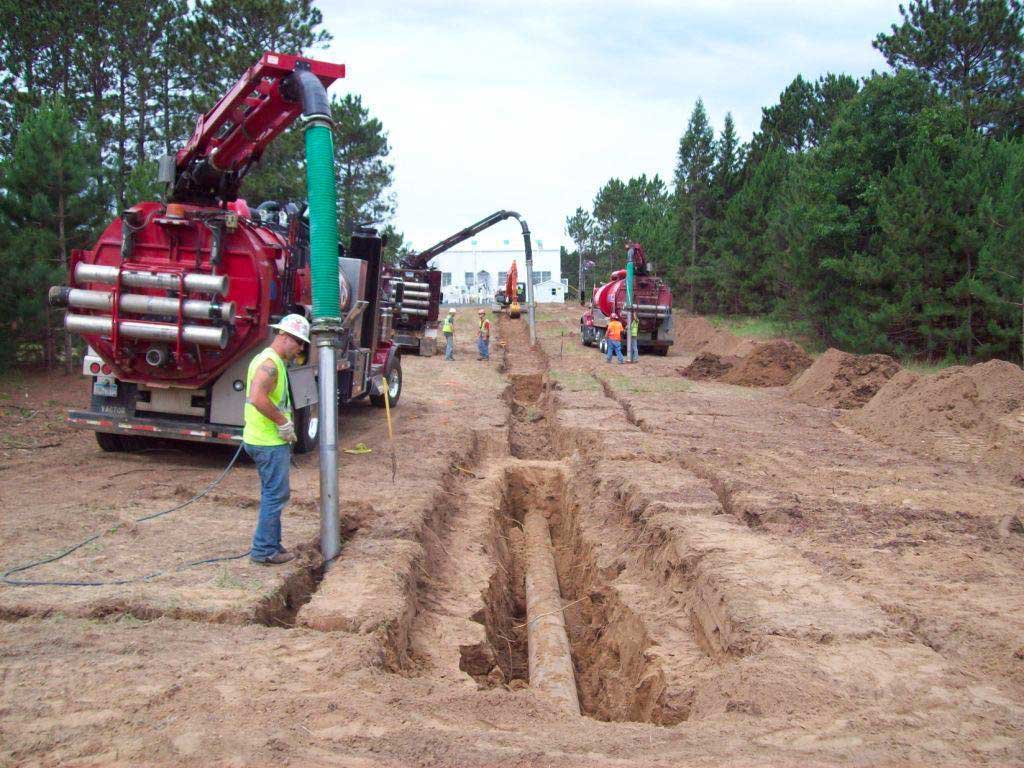
Hydro Excavation Vs. Traditional Excavation
Hydro excavation and traditional excavation are two distinct methods of digging, but the primary difference between them lies in their approach to safety. While both methods involve the removal of soil and debris, hydro excavation stands out for its enhanced safety measures, benefiting not only the workers but also the environment.
In traditional excavation, heavy machinery and sharp metal tools (like excavators and backhoes) are commonly used to dig and remove soil. While these machines are powerful, they pose a higher risk of damage to underground utilities and pipelines. Additionally, the operation of such machinery can be hazardous, especially in areas with limited space or sensitive surroundings. Because of all of this, the potential for accidents, injuries, and environmental harm is greater in traditional excavation.
On the other hand, hydro excavation utilizes a non-destructive approach, since its process does not involve the use of sharp tools. Through pressurized water and vacuum technology, this method minimizes the risk of damaging underground utilities and structures, while still allowing for precise digging.
Hydro excavation is also an environmentally friendly alternative. It eliminates the need for harsh chemicals or excessive digging, reducing soil disturbance and minimizing the impact on surrounding ecosystems. The precise water jetting and vacuuming process also ensures that only the necessary soil is excavated, reducing waste and promoting sustainable practices.
Overall, the safety advantages of hydro excavation over traditional excavation make it an increasingly popular choice in various industries. Its ability to minimize risks to workers, protect underground infrastructure, and promote environmental responsibility highlights its value as a safer and more sustainable method of excavation.
Benefits of Hydro Excavation
Hydro excavation is an innovative technique offering a range of benefits, setting it apart from other excavation methods and making it a highly sought-after method. Listed below are some key advantages hydrovac services offer:
Greater Precision: The controlled water jetting and vacuuming process allow for precise digging around underground utilities, pipelines, and other sensitive infrastructure. This minimizes the risk of damaging these vital systems, ultimately eliminating costly repairs and potential interruptions to operations.
Easy Clean Up: Compared to traditional excavation, hydro excavation leaves behind less mess and requires less clean up. This not only saves time and effort, but also minimizes disruptions to the surrounding landscape and infrastructure.
Effective Year-Round: Hydrovac excavation is a dependable method that maintains its functionality and effectiveness in all seasons. At Goliath, our hydrovac trucks are equipped with state-of-the-art boilers that enable optimal performance even in freezing temperatures. This means that regardless of the weather conditions, you can rely on hydrovac excavation to consistently deliver exceptional results and meet the specific requirements of your project.
Streamlined Process: The precise water jetting and simultaneous debris extraction result in a faster and more controlled excavation process. This streamlined approach minimizes project timelines and ensures that deadlines are met.
Less Labor Intensive: Hydro excavation reduces the labor-intensive nature of excavation projects. The use of specialized equipment, such as hydrovac trucks, eliminates the need for manual digging with shovels or heavy machinery. With hydro excavation, a small team can effectively operate the equipment. Additionally, this reduces the physical strain on workers, minimizing the risk of injuries and fatigue-related accidents.
Cost Savings: Hydro excavation can result in significant cost savings for excavation projects. The streamlined process, reduced labor requirements, and minimized risks of damage to underground infrastructure all contribute to cost efficiencies. Not to mention, hydro excavation can often lead to reduced insurance rates. The lower risk of insurance claims makes it an attractive option for insurance providers, resulting in potential cost savings for project owners.
Environmentally Conscious Approach: Hydrovac services prioritize environmental preservation by minimizing soil disturbance and reducing the impact on surrounding ecosystems. By adopting sustainable practices, hydrovac services align with green initiatives and demonstrate a strong commitment to environmental responsibility.
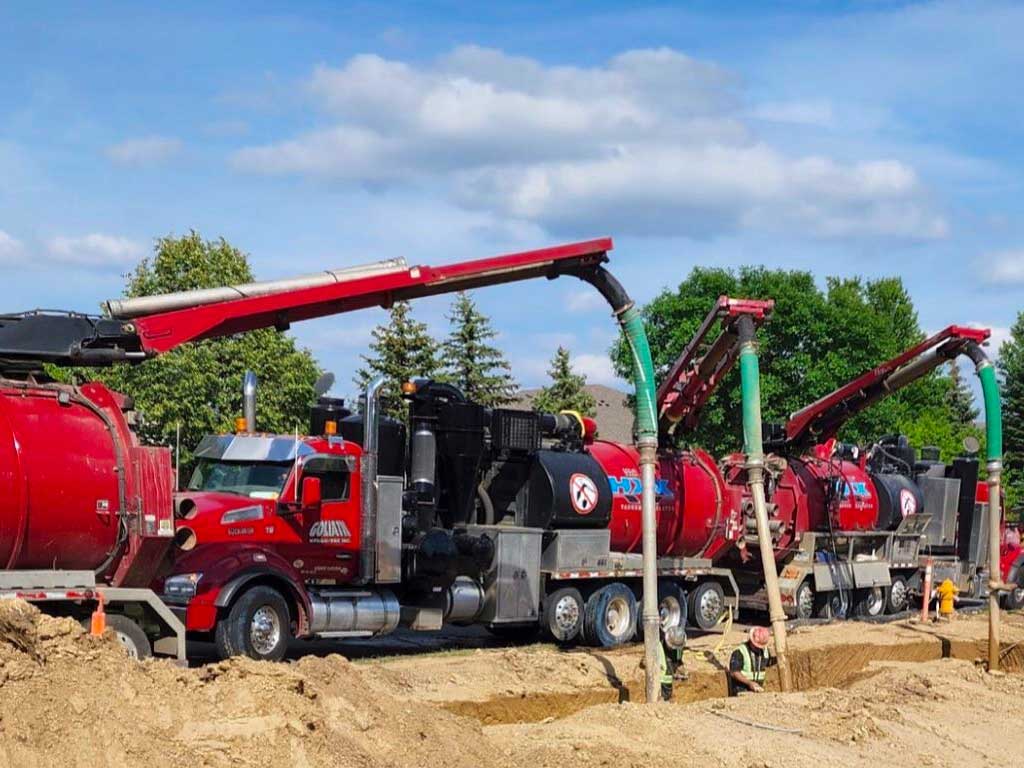
Projects Requiring Hydro Excavation
Hydrovac services play a crucial role in a wide range of projects, offering efficient and secure solutions for various excavation requirements. Below are some common projects that frequently rely on hydrovac services to ensure successful outcomes:
Cold Weather Digging: In colder climates, frozen ground can pose significant challenges for traditional excavation methods. This is not a problem for hydrovac services because the high-pressure water can break through and remove frozen soil without causing damage. This is particularly beneficial for construction projects in regions with harsh winter conditions.
Debris Removal: Whether it’s construction debris, rubble, or other unwanted materials, hydrovac services excel at debris removal. The high-pressure water breaks up the debris, while the vacuum system efficiently sucks it away, leaving the site clean and ready for further work.
Daylighting: Daylighting, also known as potholing, is the process of exposing underground utilities to accurately identify their location accurately. By using hydro excavation, contractors can safely uncover buried utilities without the risk of damaging utility lines.
Piling Holes: When installing foundations, hydrovac services can excavate the necessary holes with precision and efficiency. The non-destructive nature of hydro excavation ensures that nearby structures and underground utilities are protected while creating the required holes for secure and stable installations.
Soil Trenching: Whether it’s for laying utility lines, installing drainage systems, or creating narrow trenches for other purposes, hydro excavation provides a precise and controlled method of excavating soil while minimizing disruption to the surrounding area. This allows for efficient installation of utilities, ensuring long-term performance.
Sewer Maintenance: Proper maintenance is of utmost importance to ensure the proper functioning and hygiene of underground sewer infrastructure. When it comes to keeping sewer lines clean, hydrovac trucks are a valuable tool. By utilizing hydrovac services, the risk of backups is minimized, ensuring uninterrupted wastewater flow and a cleaner sewer system.
Conclusion – What is Hydro Excavation?
Hydro excavation has proven to be an efficient approach to removing soil, ensuring safety and sustainability. Whether it’s tackling challenging cold weather conditions or performing precise soil trenching, hydrovac services have demonstrated their adaptability and effectiveness across various projects.
Goliath Hydrovac Inc. has been in the excavation industry for over 20 years. We are a trusted provider of hydrovac services throughout the midwest. Goliath Hydrovac Inc. is committed to providing exceptional excavation services tailored to your specific needs.
Contact us at 612-727-3444 today to learn more about how Goliath’s hydrovac excavation services can benefit your operation.
RELATED POSTS
Hydrovac Excavation In The Winter: Cold Weather Digging
Do you believe that excavating in winter is more difficult, more expensive, and more time consuming? Is it...
What is Utility Potholing and Which Method is Best?
Utilities. They’re everywhere, enabling and protecting our comfortable, modern lives. Unfortunately,...
How Deep Can You Hydrovac Excavate?
Hydrovac excavators come in many forms and are often custom-built for the companies ordering them. This means...
Hydro Vacuum vs Air Vacuum Excavation: Pros & Cons
At first glance, hydro vacuum excavation and air vacuum excavation are confusingly similar. After all, their...
Hydrovac Excavation 101: Everything You Need to Know
Hydrovac excavation has been around, in one form or another, for decades now. However, a lot of professionals...
Hydrovac Excavation vs. Traditional Excavator: Which Method Is Better?
On the surface, excavation couldn’t be simpler. Just…remove the dirt. However, the choice of excavation method...
Choosing the Right Industrial Sewer Maintenance Services
The maintenance of industrial sewer systems is a critical aspect of ensuring the smooth operation of any...
How to Prevent Industrial Sewer Blockages
Industrial sewer blockages are not just a minor inconvenience; they can be a major hazard with significant...
Importance of Regular Sewer Inspections
Industrial sewer inspections are a critical component of maintaining a facility's infrastructure. These...
Essential Industrial Sewer Maintenance Tips
Industrial sewer maintenance is a critical aspect of maintaining the efficiency and safety of any facility....


